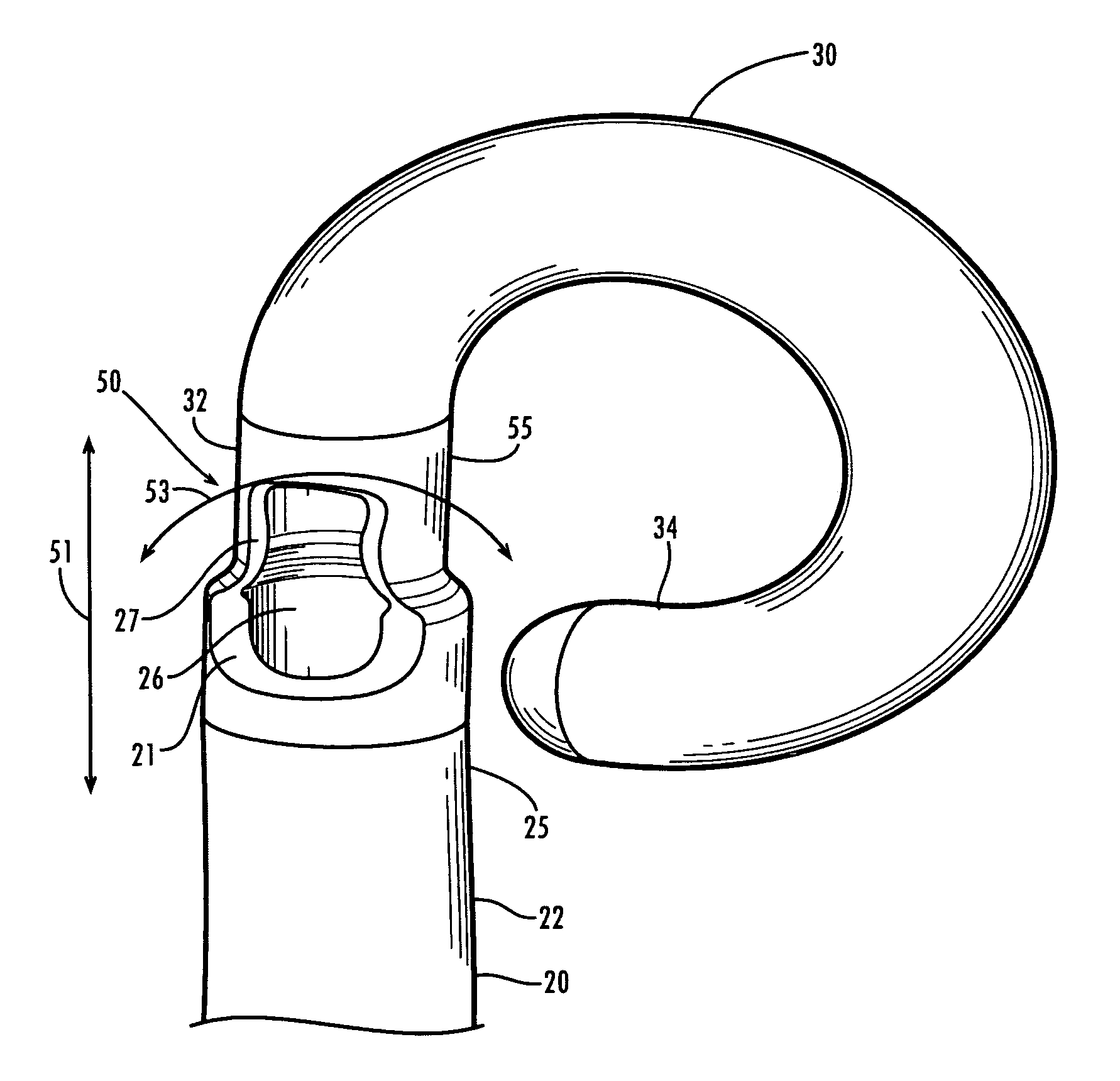Stent with flexible elements
a ureteral stent and flexible technology, applied in the field of ureteral stents, can solve the problems of difficult insertion of the stent into the patient, patient discomfort, and duct restriction, and achieve the effects of increasing patient comfort, enhancing flexibility, and maintaining patient comfor
- Summary
- Abstract
- Description
- Claims
- Application Information
AI Technical Summary
Benefits of technology
Problems solved by technology
Method used
Image
Examples
Embodiment Construction
[0018]Reference will now be made to embodiments illustrated in the drawings and specific language which will be used to describe the same. It will nevertheless be understood that no limitation of the scope of the invention is thereby intended, such alterations and further modifications in the illustrated devices, as such further applications of the principles of the invention as illustrated therein as being contemplated as would normally occur to one skilled in the art to which the invention relates.
[0019]The invention relates to embodiments of medical devices (e.g., stents) for draining fluids. The invention increases patient comfort and prevents fluid retention if a stricture in a vessel develops. For simplicity and illustration, embodiments of the invention are described herein in the context of draining urine from a kidney, through a ureter, and into the bladder. However, the invention is applicable to any situation that requires drainage within a body, from a body, or from one ...
PUM
 Login to View More
Login to View More Abstract
Description
Claims
Application Information
 Login to View More
Login to View More - R&D
- Intellectual Property
- Life Sciences
- Materials
- Tech Scout
- Unparalleled Data Quality
- Higher Quality Content
- 60% Fewer Hallucinations
Browse by: Latest US Patents, China's latest patents, Technical Efficacy Thesaurus, Application Domain, Technology Topic, Popular Technical Reports.
© 2025 PatSnap. All rights reserved.Legal|Privacy policy|Modern Slavery Act Transparency Statement|Sitemap|About US| Contact US: help@patsnap.com



